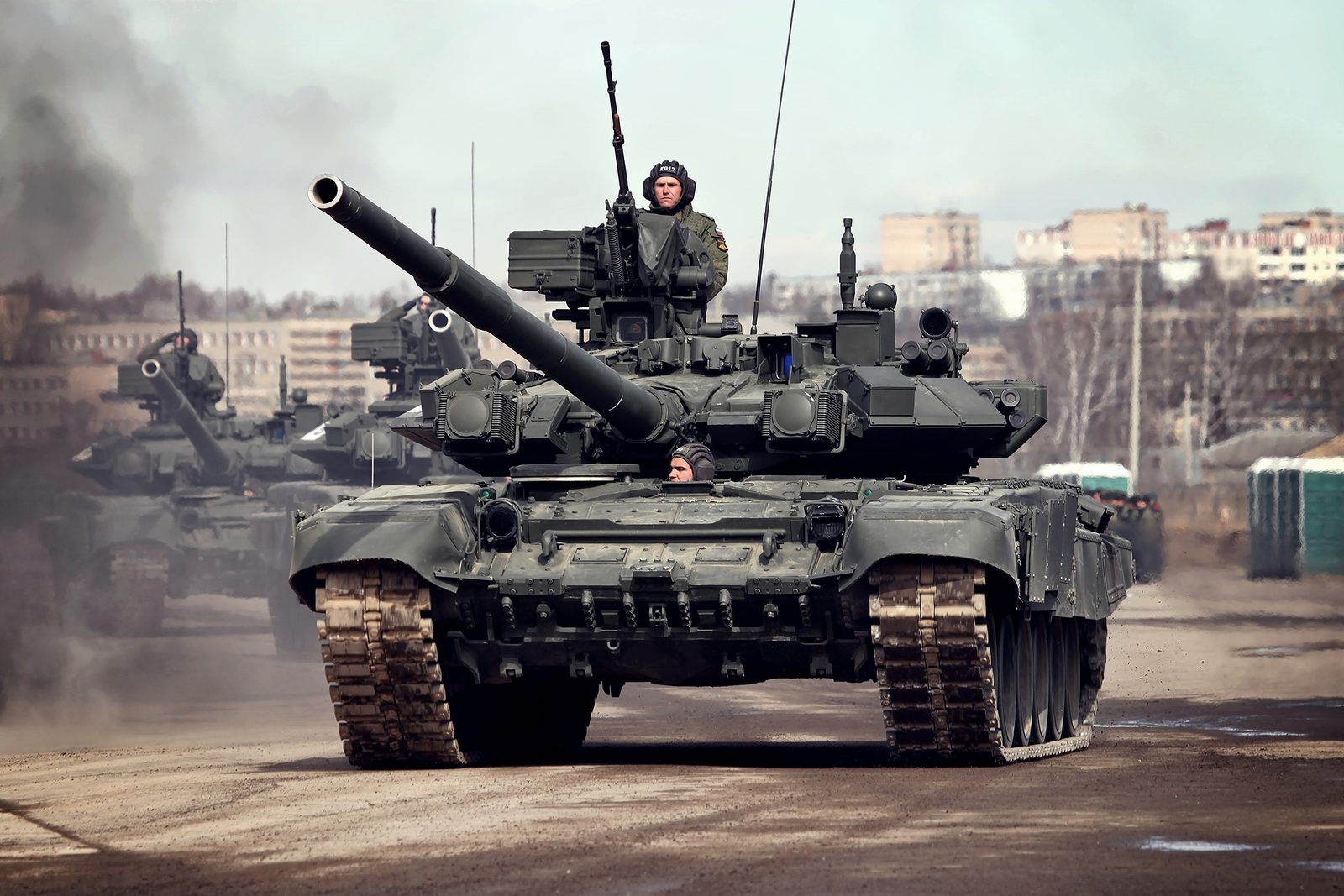
Tank warfare has been a game of brute strength, heavy armor, and quick-moving vehicles for more than a century. Larger guns, thicker plating, quicker engines—these were the hallmarks of combat on the ground. But now, there is a new contender on the field: small, low-cost, and flying. Drones are turning the tables, attacking from angles that tank crews used not to concern themselves with. While armored vehicles are still the mainstay of ground forces, they now have a pressing need to evolve. Here’s a glimpse at the world’s top 10 tanks that are in operation and how each is adapting—or struggling—to counter this new airborne threat.

10. T-90 — Russia’s Workhorse
The T-90 is a tried-and-true Soviet-era chassis married to new armor and firepower. The 125mm smoothbore cannon and reactive armor of the T-90 make it an imposing presence when going up against conventional armies, and its relatively low weight allows it decent mobility. However, as recent wars have illustrated, even an armored T-90 can be susceptible to a low-cost drone with good targeting capabilities.

9. Type 99 — The Contender
The Type 99 mates a 125mm gun to sophisticated composite armor and computerized fire control. It is intended to fight high-end opponents while also protecting from missiles and drones. Nevertheless, with air threats changing so fast, even this powerful platform has to undergo frequent upgrades to remain effective.

8. Leclerc — France’s Digital Brawler
France’s Leclerc has a 120mm smoothbore cannon, variable armor, and a burst-fire mode. Its state-of-the-art targeting systems enable rapid engagement, but as is the case with most tanks designed prior to drones being a serious threat, it was never intended to deal with swarms of unmanned aerial threats.

7. K2 Black Panther — South Korea’s Tech Tank
The K2 is among the world’s most advanced tanks today. Its 120mm cannon, embedded sensors, and networked battlefield systems are combined with active protection systems designed to deal with drones as well as traditional missiles. Lightweight yet extremely powerful, it is obviously designed for the drone-infested battlefield of today.

6. Type 90 — Japan’s Agile Striker
Japan’s Type 90 was designed to be fast and accurate. Its 120mm gun and high-output powerplant provide it with superior mobility, while onboard computers optimize crew effectiveness. Yet it must keep changing to stay effective against increasingly rapid, cheap aerial threats.

5. Merkava Mk 4 — Israel’s Fortress on Tracks
The Merkava Mk 4 reverses the traditional tank design by housing its engine in the front, protecting its crew. Its 120mm gun, modular armor, and active defense systems are especially well-suited for asymmetric battlefields, where drones and guerrilla attacks are prevalent.

4. Challenger 2 — Britain’s Heavy Hitter
The Challenger 2 is famous for its durability and precision with its 120mm rifled gun and thick armor. Though it has been upgraded to deal with drones and advanced missiles, the rise of UAVs forces even this older platform to adapt further.

3. Leopard 2 — Germany’s Balanced Champion
The Leopard 2 has been considered the world’s greatest all-around main battle tank. With speed, firepower, and armor, it has been a NATO favorite for decades. New electronic warfare systems and active defenses are keeping it in the running against the drone threat.

2. T-14 Armata — Russia’s Next-Gen Gamble
The T-14 Armata has an unmanned turret, a 125mm gun, and heavy armor. It has sensors and networked battlefield capabilities designed to protect it from both surface and aerial attacks. Nevertheless, with not a great deal of real-world combat experience, certain aspects of its performance remain unproven.

1. M1 Abrams — The American Benchmark
The M1 Abrams has been the benchmark for decades. Its 120mm smoothbore cannon, composite armor, and constant updates make it an unstoppable force. Newer variants feature advanced sensors and active protection systems to counter drones that render the Abrams the leading force in armored warfare.

The Drone Factor
Recent conflicts have illustrated how much of an upset drones can cause. A machine that only costs a few hundred dollars can cripple a million-dollar tank. FPV drones, loitering munitions, and AI-governed UAVs are making tank crews change their tactics. Electronic warfare can jam some attacks, but signal-free autonomous drones test conventional defenses. Survival now hinges on how rapidly tanks and crews can adapt.

Lessons of the Past
Tanks such as the Tiger I, T-34, and Sherman M4 continue to guide contemporary design. The sloping of the T-34 armor changed protection forever, and the Tiger I established new thresholds of firepower. Those basic axioms—balance, flexibility, and survivability—continue to hold fast in tank design today.

Rolling Into the Future
Tanks no longer simply engage other tanks. Their enemies now fly, swarm, and change. The greatest tanks in the world will be those that remain connected, remain shielded, and remain on the move, whatever shape the battlefield does take.
